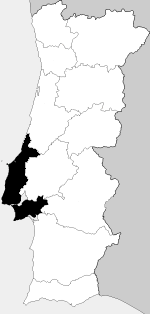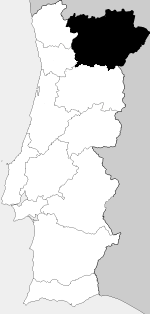
Vinho Verde refers to Portuguese wine that originated in the historic Minho province in the far north of the country. The modern-day 'Vinho Verde' region, originally designated in 1908, includes the old Minho province plus adjacent areas to the south. In 1976, the old province was dissolved.

Alvarinho or Albariño is a variety of white wine grape grown in Northwest Portugal and Galicia where it is also used to make varietal white wines. In Portugal it is known as Alvarinho, and sometimes as Cainho Branco, Albariño is the Galician name for the grape.

Portuguese wine is the result of traditions introduced to the region by ancient civilizations, such as the Phoenicians, Carthaginians, Greeks, and mostly the Romans. Portugal started to export its wines to Rome during the Roman Empire. Modern exports developed with trade to England after the Methuen Treaty in 1703. From this commerce a wide variety of wines started to be grown in Portugal. And, in 1758, one of the first wine-producing regions of the world, the Região Demarcada do Douro was created under the orientation of Marquis of Pombal, in the Douro Valley. Portugal has two wine-producing regions protected by UNESCO as World Heritage: the Douro Valley Wine Region and Pico Island Wine Region. Portugal has a big variety of local kinds, producing a very wide variety of different wines with distinctive personality.

Alentejo is a Portuguese wine region in the Alentejo region. The entire region is entitled to use the Vinho Regional designation Alentejano VR, while some areas are also classified at the higher Denominação de Origem Controlada (DOC) level under the designation Alentejo DOC. VR is similar to the French vin de pays and DOC to the French AOC. In the southern half of Portugal, the Alentejo region covers about a third of the country and is sparsely populated. In 2005, South Oregon University scientist Gregory V. Jones identified Alentejo as the world's most challenged wine region from a climate change perspective. The region is noted for it vast cork production but has in recent years garnered attention for its table wine production. Some producers of this region still do wine in great potteries as in Roman times.
Cova da Beira is a Portuguese wine region centered on the Cova da Beira region between the Dão and Vinho Verde DOCs in the wider Beiras VR wine region. Cova da Beira was initially a separate Indicação de Proveniencia Regulamentada (IPR) region, but in 2005, it became one of three subregions of the Beira Interior DOC, which has the higher Denominação de Origem Controlada (DOC) status. Its name may still be indicated together with that of Beira Interior, as Beira Interior-Cova da Beira.

Algarve is a Portuguese wine region covering the same areas as its namesake region. The region is classified as a Vinho Regional (VR), a designation similar to a French vin de pays region. Located on the southern coast of Portugal, the region's wine industry is driven by the local tourist economy with very few wines being exported.

Lisboa, until 2009 named Estremadura, is a Portuguese wine region covering the same areas as the Estremadura region, and taking its name from the country's capital. The region is classified as a Vinho Regional (VR), a designation similar to a French vin de pays region. While the Beiras and Alentejo VRs are largest geographically, the Lisboa region is Portugal's largest producer of wine by volume. The region stretches from Lisbon along the Atlantic coast to the Bairrada DOC.

Tejo, until 2009 named Ribatejo, is a Portuguese wine region covering the same areas as the Ribatejo Province. It takes its name from the river Tejo (Tagus). The entire region is entitled to use the Vinho Regional designation Tejo VR, while some areas are also classified at the higher Denominação de Origem Controlada (DOC) level under the designation DoTejo DOC. VR is similar to the French vin de pays and DOC to the French AOC.

Trás-os-Montes is a Portuguese wine region located in the Trás-os-Montes e Alto Douro region. The entire wine region is entitled to use the Vinho Regional designation Transmontano VR, while some areas are also classified at the higher Denominação de Origem Controlada (DOC) level under the designation Trás-os-Montes DOC. VR is similar to the French vin de pays and DOC to the French AOC.
Azal branco is a white Portuguese wine grape planted primarily in the Minho region but with greater expansion to Amarante, Basto, Baião and Vale do Sousa sub-regions. It noted for the high acidity of its wines, and is used for white Vinho Verde. Varietal Azal Branco wines can be somewhat reminiscent of Riesling.

Loureira, Loureiro or Loureiro Blanco is a white wine grape cultivated in the northwest of the Iberian Peninsula. This includes Galicia, Spain and Minho, Portugal. In the latter, it is notably cultivated along the Lima River, a sub-region of Vinho Verde.

Duriense is a Portuguese wine region covering the same area as the Douro DOC and the Port wine region. In difference from Douro DOC, Duriense VR is a designation at the lower Vinho Regional (VR) level, which corresponds to table wines with a geographical indication under European Union wine regulations, similar to a French vin de pays region. Thus, it is the simpler or less typical wines of the Douro region that are sold using a Duriense VR label.
Azal Tinto or Amaral is a variety of red Portuguese wine grape. It is planted in the Minho region where it is used in red Vinho Verde, while the related Azal Branco is used for white Vinho Verde.

Treixadura or Trajadura is white Portuguese wine grape variety grown primarily in the Vinho Verde wine region of northeast Portugal and the Galician wine regions of Ribeiro and Rías Baixas in Spain where the variety is known as Treixadura. The grape is primarily a blending variety that adds body and light lemony aromatics to wines. It is most commonly blended with Loureiro and Alvarinho in Rías Baixas while in Ribeiro it is often blended with Torrontés and Lado.
Terrantez is a white Portuguese wine grape variety that was once widely used on the island of Madeira to make the sweet fortified wine for which the island is known. Today, the variety is nearly extinct on the island. There are still some limited plantings in the Minho Province where, as Cascal, is a permitted blending variety with Alvarinho and other grapes in the Denominação de Origem Controlada (DOC) wine Vinho Verde. As Terrantez the grape is permitted in several of the Indicação de Proveniencia Regulamentada (IPR) regions of the Azores including Biscoitos IPR on Terceira Island, Graciosa IPR on the white island of Graciosa and Pico IPR on Pico Island.
Rufete is a red Spanish/Portuguese wine grape variety that is grown primarily used in port wine production in the Douro region of Portugal. It is also grown up along the Duero basin across the border in the Spanish province of Castile and León and can be found in the Dão DOC of Portugal where the variety is known as Tinta Pinheira.
Caíño blanco or Cainho branco is a white Spanish and Portuguese wine grape variety that is grown in northwest Spain and northern Portugal in a stretch of area between Vinho Verde and the Denominación de Origen (DO) of Rías Baixas. The grape is often confused for Albariño and in Vinho Verde it is sometimes known under the name Alvarinhão. While DNA profiling conducted in the early 21st century has shown that the two grapes are distinct varieties, the evidence has suggested that Caíño blanco maybe an offspring of Albariño from a natural crossing with the red Portuguese wine grape Azal tinto.
Donzelinho branco is a white Portuguese wine grape variety that is classified as one of the "Very Good" varieties authorized to be used in Port wine production. While rarely seen as a varietal wine, Donzelinho branco is a permitted variety in the white blends of several northern Portuguese wine regions including the Denominação de Origem Controlada (DOC) of Douro and Trás-os-Montes and the Vinho Regional (VR) wines of Duriense and Transmontano.











